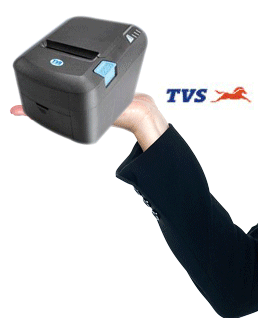How are RFID Blocking Works?
Published on: 02 Jan, 2021 | 06:28:15 PM
The main types of RFID Blocking
RFID blocking systems reduce the transmitted signal power of the reader, preventing the microchip in the RFID card from working. This ensures RFID card security. Essentially, RFID readers transmit signals which power the microchip in the card, the microchip in the card then powers up and send data back to the reader. This can be prevented by either deflecting/blocking RFID signals, or by transmitting a signal that interferes with the reader but this only works with one frequency and often a certain type of technology.
What are radio frequency identification tags?
Contact-less payment cards, ID cards, passports, key cards, and temporary cards all use the same basic technology, Radio Frequencies Identification is commonly known as RFID. This system uses radio waves to read, transmit, and capture information stored in a tag attached to an object.
Radio frequency identification tags can be read wire-lessly from up to a few feet away.
RF identification tag does not have to be directly within the reader’s line of sight to be read.
Radio frequency id tags are now smaller and cheaper to produce. This is why they are now widely used.
Your contact-less bank or security card and passport contain a microchip linked to an antenna. The bank cards and passports use a standard set of radio frequencies – 13.56 mhz. Security passes, keys, product tags typically use 125 kHz as well as 13.56 mhz.
Most RFID systems are designed to work at short-range, typically a few inches. However, cards can be read at a meter with powerful RFID readers and the real concern is 30+ meters by hackers. Thus, contact-less cards are not secure.
Passive and active RFID blocking technology. How RFID blocking works?
Generally, RFID blocking cards, shields, and protectors work in several ways. They are either passive or active. Passive shields or protectors can absorb the RFID signal or deflect it. Active RFID shields or protectors use a microchip. They typically send out an interfering signal. It is effectively pretending to be another card causing a card clash issue in the reader. Or it drains the power from the transmitting signal required to power the chip in your card. If the chip can’t receive enough power to function it can’t transmit a reply.
Deflected or absorbed RFID signals
Passive shielding works in two ways, reflective loss (bounced radio frequency energy) and absorption loss (energy/power absorbed in the shield). Both types reduce the transmitting rf signal that would power the RFID chip.
However, deflecting or absorbing RFID signals for banking cards and contact-less payment cards at 13.56 MHz is far simpler than blocking security cards and passes at 125 kHz. 125 kHz requires near field shielding to protect the RFID chip.
Best RFID protection technology
Therefore, to protect contact-less cards, it is better to choose solutions that block all types of RFID signals. RFID Cloaked has developed such technology. RFID secur RFID blocking fabric will protect both types of cards. It was developed and tested in the UK, with testing undertaken at Plymouth University Brunel department and it is manufactured in the UK.
RFID secur RFID blocking fabric is used for the production of RFID secur Contactless Blocking Cards. These are superfine cards that can protect all your contact less cards against Bluetooth, Wifi, RFID and NFC, 3 and 4G mobile phone signals. RFID blocking cards protect and secure ID cards and payment cards from being hacked, skimmed, and cloned from the most powerful RFID and NFC readers at frequencies of both 13.56Mhz and 125Khz.



